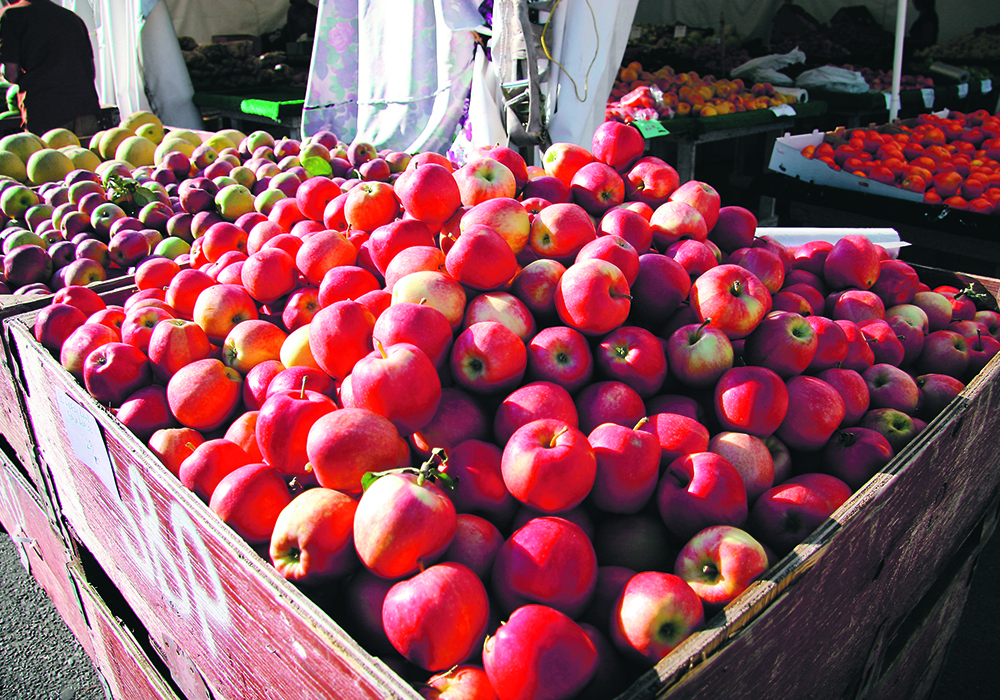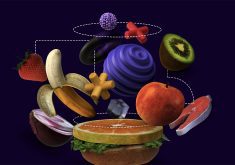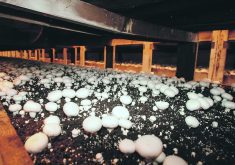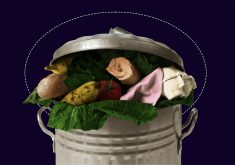A researcher hopes a protective coating made out of oat starch can be used to extend the shelf life of fruit and vegetables
WINNIPEG — Fruit and vegetables are to blame for much of the food waste in Canada.
Of all the household food items that are thrown in the trash across the country, vegetables represent 30 percent of total food waste (by weight) and fruit is 15 percent, says LoveFoodHateWaste.ca.
The website, operated by the National Zero Waste Council, claims that Canadians throw out 1.3 million apples, 2.6 million potatoes and 1.3 million tomatoes every day.
Lovemore Malunga, an Agriculture Canada scientist in Winnipeg, is working on a way to reduce this massive waste of food and the waste of resources used to grow fruits and vegetables.
The solution might be found inside oat groats.
“We’re working with the fruit growers to see if we can use oat starch as a coating … to coat the fruits,” said Malunga, an Agriculture Canada researcher who studies the functional and nutritional properties of pulse crops and cereals.
“We could potentially extend the shelf life of the fruit (or vegetable).”
Malunga and his fellow Ag Canada scientists in Manitoba have developed a formulation of the oat starch coating, which could also be described as a biofilm.
The basic concept is that the edible starch is a moisture barrier, almost a waxy coating, which prevents the fruit from rotting.
Instead of fruit lasting one week, “it could potentially last two weeks,” Malunga said.
It could potentially be sprayed onto an apple or tomato, although another option is a bath in which fruit is washed in the oat starch formulation.
The concept is appealing because oat starch is edible, could replace plastic used to preserve vegetables and might make a dent in food waste.

However, it is a long way from commercialization.
Agriculture Canada scientists in Kentville, N.S., have been testing the oat starch formulation on fruit and berries to see if it preserves the produce.
“We are waiting to hear, good or bad,” Malunga said.
“Theoretically, it should work…. This is the first formulation. There is still room for improvement.”
Malunga and others with Agriculture Canada aren’t the only researchers who are studying new methods to preserve fresh fruit and vegetables.
Last year a group Spanish food scientists published a literature review on edible coatings.
“The need for food waste reduction, the consumers’ interest in incorporating more fresh products in their diet and the awareness of society about the environment are … why edible coatings are receiving so much interest from the scientific community,” they wrote in a paper published at mdpi.com.
Some companies are already selling coatings that protect fruit and vegetables.
Apeel from California has developed a coating that’s derived from plant oils. The company says it acts like another layer of peel to the fruit or vegetable.
“Our plant-based protection slows water loss and oxidation, the primary causes of spoilage,” according to its website.
Greenhouse growers in Ontario started experimenting with Apeel’s technology in 2022 to replace the plastic wrap that covers English cucumbers.
Dino Di Laudo of Topline Farms in Leamington, Ont., told CTV News that it was testing the coating and shipping Apeel-treated cucumbers to 12 grocery stores in Toronto.
“It’s just basically adding another skin to the cucumber, he said.
“I’m hopeful that within two or three years that this will be the norm for cucumbers.”
















